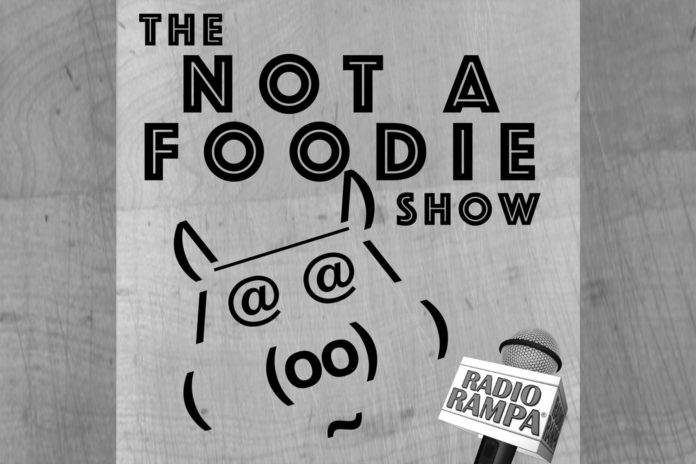By- Mike Miranti
Clean Chinese Food and Runaway Pigs
It’s 2019 and people still use food to perpetuate racist stereotypes. Food blogger and nutritionist Arielle Haspel opened up “Lucky Lee’s” a “clean” Chinese Restaurant named after her husband. I personally don’t have a problem with someone opening up a restaurant serving food from ethnicities or cultures not their own, as long as they respect it.
Haspel is not respecting Chinese culture by playing into awful stereotypes about Chinese Food being greasy and making you feel bloated. Don’t even get me started on MSG. In the ’50s and ’60s, Chinese Restaurants were incredibly popular, but never considered fine dining because of negative stereotypes. Putting up Instagram posts saying that your food has less oil than traditional Chinese Food is like putting up a post saying “Our chicken is real chicken, not cat like other Chinese restaurants”
Also, this place is only open from 11-3 so its barely a restaurant.
In other news Princess, the Pig escaped her pen in Humboldt County, California. A neighbor posted a photo on Facebook, and the local police were able to figure out who the owner was. They went to a neighbors house to ask him to watch Princess while they tracked down her owners. The neighbor obliged, but when the police got back to the home, the neighbor was in the front yard butchering Princess.
R.I.P Princess the Pig, we hardly knew ye.
Tipping is Stupid and Unfair, but Completely Necessary
Finance Giant CNBC ran this article in February, but it went viral this week. With a clickbaity title like”This Tipping Trip Can Save You Up To $400 A Year”, of course, I knew not to expect anything good, and would probably walk away angry. Long story short, to save you the click and not give them the web traffic, the author says that it is socially acceptable to tip on the pre-tax total instead of the post-tax total and he is correct but just because he is correct doesn’t mean he is right.
People, customers, guests, whatever you would like to call them don’t tip on service. They tip on personality, how they connect with their server, and a million other tiny little things. All this author did was take money out of servers pockets. This article will not turn any pre-tax tippers into post-tax tippers but will have people think that they are saving money(You just spent $100 on dinner, tipping $20 instead of $22 isn’t going to save anything)
Tipping is a necessary evil though. I definitely come from a place of privilege for what I am about to say. I’m a Tall Cis-Het White Male who has only worked at Upscale Casual/Fine Dining establishments. Every place I’ve ever worked at had a check average of $50-$100 per person, and people tip me between 18 and 20 percent. I love working for tips because I live in a place where people tip well, and I am a person that statistically speaking, people like to give money to.
If you live in a small town and work at a chain restaurant that gets people in by serving them 3 courses for $10, tips are everything to you. That fifty cents you get from a table tipping post-tax might be what actually keeps you above zero this week. Server wage is $2.13/hr in most places, which means after taxes you are working strictly for tips.
I can go deep into serving actually being skilled labor, and how most people reading this cannot do what my team is able to do. Every dinner is a symphony that I’m conducting, and much like a conductor, all I can do is tell my orchestra what to do and hope they execute it correctly. If your food comes out wrong, give the restaurant a chance to fix it before you decide you now aren’t going to tip. If you ask a female server for her number and she says no and you don’t tip, you’re a garbage person. Lastly, if you actually want to save money, learn to cook and dine out less. The best way to learn to cook is to keep following us on Instagram and Twitter and asking us questions about recipes, techniques, and anything else you can think of food wise.
A Guide to Sake with Zak Gross
Sake Expert Zak Gross joined us in the studio this week to talk all this Sake. Zak is a partner of Soto Sake, a newer sake brand that is taking the US by storm. It is an incredibly smooth and affordable Junmai Daiginjo.
Essentially everything I know about sake I learned from Zak. We worked together at Sen Sakana and he made sure to teach me everything I needed to know and then some. I still occasionally text him questions and he always gets back to me and explains his answer thoroughly.
Zak started serving at a very popular Japanese Restaurant in Hollywood, California and decided he would separate himself from the other servers by learning about sake and being able to upsell expensive bottles. His sake knowledge allowed him to go work at top Japanese restaurants all over LA and NYC. He eventually became the head bartender at Shuko and then worked with as the Beverage Director at Sen Sakana.
Sake 101
There are two ways to categorize sake
Purity:
Junmai: Roughly translates to “Pure” this classification means that this sake was made only with Water, Yeast, Rice, and Koji. The rice milling can be at 70% for it to be called Junmai, but can also be a prefix for Ginjo and Daiginjo, hence Soto Sake being a Junmai Daiginjo. If sake does not have the Junmai label it means that the brewer decided to add a small amount of neutral spirit to the sake.
Milling:
Honjozo: This is the most popular classification of sake in Japan. It is the minimum amount of polishing at 70%. I like to try a brewery’s Honjozo before I try anything else because if it is good, the rest of their sake will most likely be good
Ginjo: Rice with a polishing rate of 60% or less, a cleaner sake compared to Honjozo
Daiginjo: Rice with a polishing rate of 50% or less, the highest quality sake



















